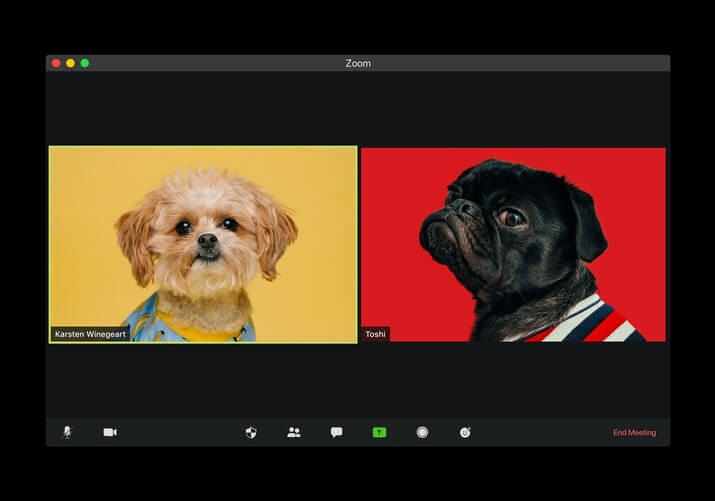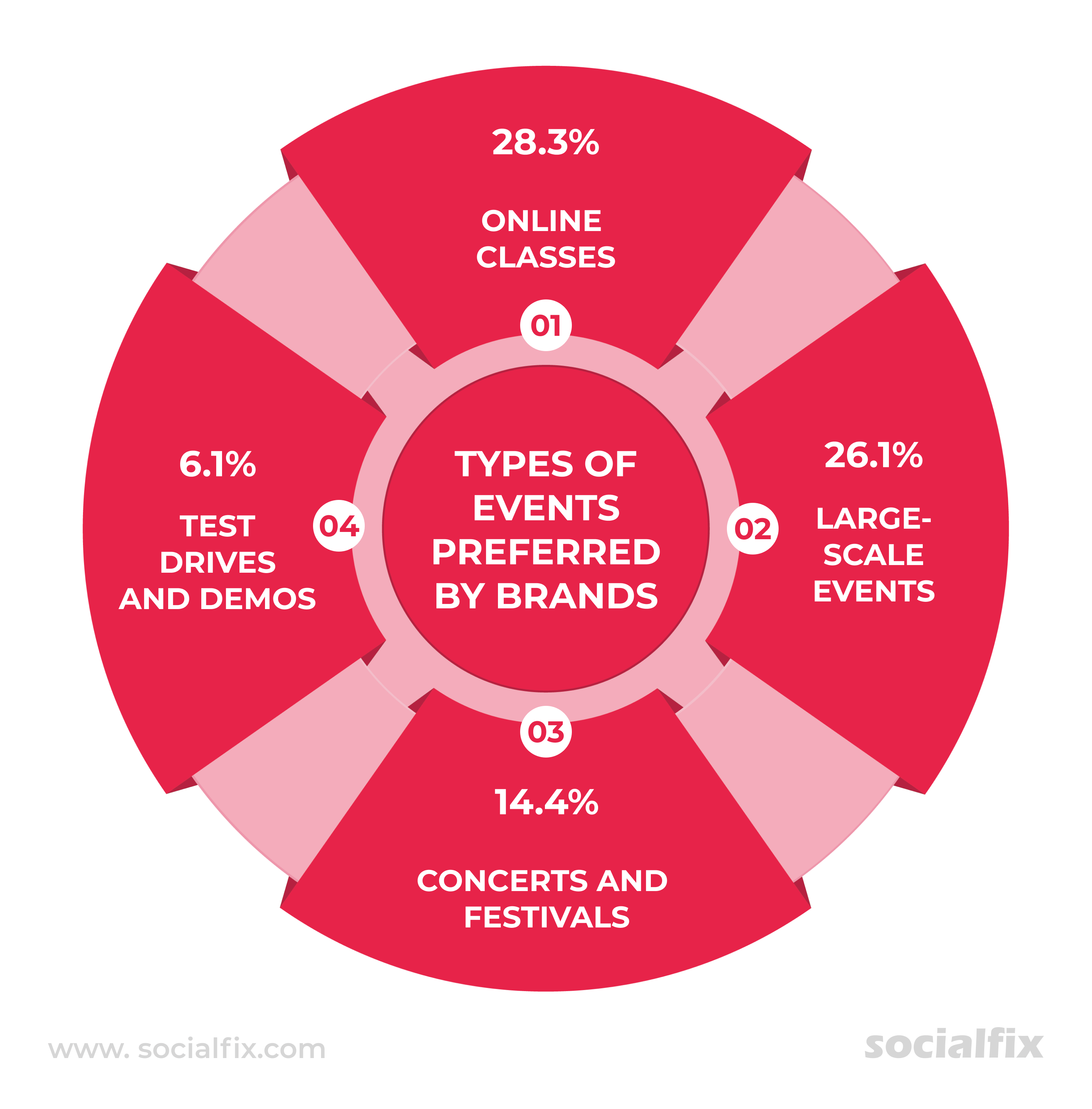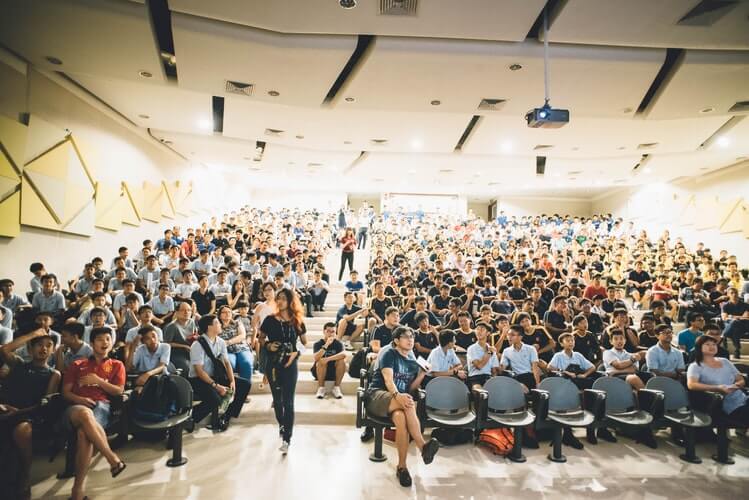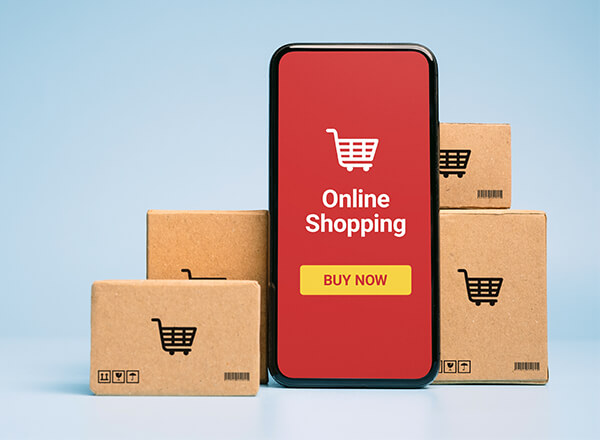Want a heads up when a new story drops? Subscribe here.

The benefits of live and virtual events are plenty. An in-person event offers the luxury of leaving your home, office, or campus for a couple of days. You have the chance to meet new people, reconnect with colleagues, scout out new partners, and enjoy interactions with people, activities, and places. It’s a time to recharge and an opportunity to connect beyond the set meeting time.
But at least for now, gone are the days of in-person conferences, business gatherings, and trade shows, and the opportunities to meet in person. However, virtual events can also offer plenty of benefits for both brands and audiences. Let’s look at some of them and how you can integrate virtual events into your marketing strategy.
Table of Contents
Virtual Events- Part of the Post-Covid-19 Reality

While it is still possible to organize a successful in-person event, this requires a lot of collaboration and planning. Onsite Covid-19 tests, temperature screenings, and following pandemic protocols are a must.
Organizers have already migrated their activities to the online space to bridge the gap between the need for face-to-face interaction and staying safe during a health crisis.
Reopening is likely to be a gradual process. As virtual events are here to stay for the foreseeable future, it is time for marketers to revise their event planning strategy and leverage virtual experiences that can keep brands top of mind.
Virtual Events Marketing Strategy

A successful virtual marketing strategy entails identifying the right digital tools, defining a target audience, and offering the appropriate type of online experience.
1. Define Your Audience
Promoting an event can be time-consuming and expensive unless you define your target audience. The choice of approach depends on whether you have previous experience hosting virtual events.
In case you have, you can take a closer look at your audience demographics and characteristics like education and income level, marital status, occupation, gender and age, interests, and technological knowledge.
If you don’t have access to this type of demographic data, identifying your event goal will help you to define your target audience. If you are looking to increase brand awareness and close opportunities with high-value customers, take a look at your current customers and target similar demographics.
An alternative approach to find your target audience is to look at your competition. Find out what they do to promote virtual events and which social media platforms they use. Look at the types of content they promote, whether audio, video, infographics, images, content, podcasts, or blogs. The type of engagement they receive will also give you an idea of the kind of audience you need to be targeting.
2. Offer the Right Type of Experience

Virtual experiences come in different forms, including industry meetings, conferences, online summits, webinars, festivals, fairs, and expos. The type of event to host depends on where you are in your customer journey.
Whichever type of event you choose, however, they all follow a similar sales funnel of three stages:
- awareness,
- interest, and
- decision
Awareness Building Virtual Events
To build awareness and attract the attention of audiences that already know and follow your brand you can offer large-scale events, concerts, and networking, and speaker events around a specific theme or topic of interest.
Adobe gives an excellent example of how virtual summits can help deliver similarly engaging and impactful events.
In 2020, their summit had to be re-planned and changed from a live Las Vegas conference to an on-demand online digital experience.
The company not only managed to reorganize the event but made it a complete success with live streams from living rooms, kitchens, and spare rooms, taking the opportunity to give advice on how to self-film as a beginner.
Their content generated over 20K tweets across the 5 days of the summit. People loved their ideas.
Interest Building Virtual Events
During the consideration stage, you want to offer events that build and nurture relationships with prospective customers. Examples of such events are seminars, workshops, unboxings, virtual classes, and ask me anything sessions.
A seminar with an audience-driven Q&A and a speaking panel will help you to build thought leadership and authority while workshops offer lasting value for attendees and help increase follow-on business.
Headspace- the online meditation platform offered free online classes during the pandemic to help relieve stress and offer support during a difficult time.
Decision Aiding Virtual Events
Finally, community-based events, demos, and launches are more meaningful for existing advocates and during the decision stage. Some events offer value at any stage, such being VIP events and conferences. The choice of event, however, depends on your human and financial resources.
Organizing a successful conference requires setting a time scale, planning size, choosing and coordinating multiple speakers, content moderation, carefully timed breaks, and audience engagement.
Many of these components are managed online, which results in increasing levels of complexity.
A successful online conference requires a set of skills Search Engine Journal has mastered. Their SEJ eSummit is an advanced virtual conference for SEO and digital marketing professionals that is organized regularly and delivers actionable tips, insights, tactics, and strategies on SEO, PPC, social media, and content marketing.

When choosing a format, it also pays to look at the types of events preferred by brands.
Online classes are the preferred format (28.3%), followed by large-scale events (26.1%), concerts and festivals (14.4%), tours (6.7%), and test drives and demos (6.1%) (AnyRoad).
 Choose a Virtual Event Based on Your Goals
Choose a Virtual Event Based on Your Goals
Finally, it is important to choose an event type that matches your business objectives. Industry conferences and educational events, for instance, facilitate networking, increase knowledge and understanding, and boost retention and product utilization rates.
Customer and partner events facilitate referral business, cross-selling, and upselling, increase engagement, and encourage collaboration. Industry events offer participants an opportunity to socialize, exchange ideas, and connect with partners and clients. Product launch events help increase attendee understanding of a service or product and produce more sales and customers.
3. Identify the Right Tools

Going digital comes with a host of superpowers and tools. Virtual events software offers a plethora of tools for a truly immersive experience, including screen sharing, breakout sessions, chatrooms, live polling, and question and answer features.
You can leverage digital capabilities to offer quizzes and contests, convene attendees in lounges, and keep track of session attendance, networking, engagement, registrations, and leads.
You will find software solutions to host a variety of events, including roadshows, community events, workshops and training, conferences, and product launches.
There are also different platforms to host virtual experiences. The most commonly used platforms for virtual events are Instagram Live and Zoom, each accounting for 34.1% of usage. Next is YouTube Live with 25.6%, followed by Facebook Live with 10.1%.

Popularity aside, when looking for the right events platform, marketers should choose one that offers features like customizable email templates, branded event website and web room, and registration capabilities.
Planners also benefit from customization features such as feedback surveying, Q&A, group chat, and messaging and chatting capabilities.
To attract major sponsors, event planners can showcase video footage, product demonstrations, and logos in networking spaces and on social media. Other ways to showcase event sponsors can be:
- Digital trade show bags
- Gamification
- Rotating ad banners
- Social media
- Main stage
- Virtual exhibit hall
Platforms with sponsorship modules enable planners to showcase sponsors via logo placement, ad banners, product brochures, premium listings, push notifications, and sponsored posts.
4. Promote Your Virtual Event

How you market your event depends on whether you are trying to reach wider audiences or existing contacts. Social media platforms such as LinkedIn, Twitter, Instagram, and Facebook have built-in capabilities that allow you to market your event to the attendee persona profile you created.
Social media platforms are also a top choice for event promotion, according to data by Marketlik. Overall, 76 % of brands use email marketing as the most effective way, followed by social media with 60%.
Email marketing can be an efficient tool to reach existing contacts and communicate your program, event goals, pricing, and scheduling. Anyone interested in attending will be able to quickly check-in.
To make your event stand out, you want to create a dedicated page with clips of workshop leaders and keynote speakers, professional pictures, and relevant videos. Make sure you also include information such as speaker bios, agenda, time and date of the event, payment options, sign-up links, and sponsor information.

Another way to reach a wider audience is to use Instagram, Linked In, or Google Ads. Social media ads allow you to target prospects based on factors such as geographic segmentation, behavior, psychographics, and demographic data.
There are plenty of other ways to promote your event such as writing a press release, making a vlog or video, and requesting self-promotion from your keynote speakers.
Tip: Hundreds of growing businesses use Socialfix to promote virtual events, reach wider audiences, and showcase their products.
Final Thought

It has been a challenging year and a half for everyone, businesses and consumers alike. We are living through a global health and economic crisis, the likes of which we have not seen in over 100 years. The scale and scope of the crisis have caused anxiety, uncertainty, and fear around the world.
We are faced with economic instability, cabin fever, social isolation, loneliness, and disrupted family and work routines. There is light at the end of the tunnel as states continue their efforts to get everyone vaccinated.
Yet, we still have some time to go before we ditch social distancing. Return to life with travel, cafes, concerts, and in-person events may need some time.
With that in mind, event planners need to find ways to maximize their digital presence. They can do it through webinars, industry events, virtual trade shows, and 3D virtual tours. Hybrid events are also likely to become the new norm.
They allow participants to meet in person while communicating with virtual attendees via content sharing, voice, chat, and video. Both virtual and hybrid events offer brands the opportunity to be seen by and engage with more people.
As our post-pandemic future is likely to be endemic, virtual and hybrid experiences are a way forward. They’re the best alternative when in-person events are not safe or possible.





















